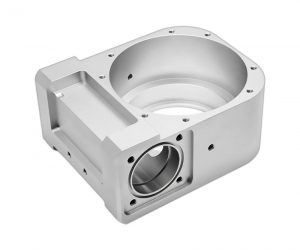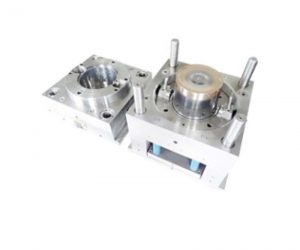the journey through the captivating domain of additive manufacturing reveals not only its historical and technological dimensions but also its potential to redefine the future of production itself. The narrative of AM is not merely about technological evolution; it encapsulates a broader dialogue about innovation, sustainability, and the intricate interplay between creativity and manufacturing in the modern age.
Introduction to Additive Manufacturing Processes
In the dynamic sphere of manufacturing, a seismic shift is unfolding, fueled by the ascendancy of additive manufacturing (AM), more commonly recognized as 3D printing. This innovative layer-by-layer fabrication paradigm has fundamentally altered the methodologies by which products are conceived, prototyped, and manufactured across a plethora of sectors, spanning aerospace, automotive, healthcare, and consumer goods, among others. The exploration titled "Beyond Traditional Craftsmanship: The Evolution and Future of Additive Manufacturing Processes" delves into the enthralling historical context, avant-garde technologies, and transformative applications that define this burgeoning field. Furthermore, it critically engages with the socio-economic and environmental ramifications woven into the fabric of this technological revolution.
The Rise of 3D Printing and Its Significance
Additive manufacturing stands at the forefront of a technological renaissance, dismantling conventional manufacturing frameworks and unlocking an expansive array of possibilities. Its capacity to facilitate the production of intricate, bespoke, and just-in-time products empowers trailblazers, entrepreneurs, and established industry magnates to fundamentally reimagine the production paradigm. This revolutionary fabrication methodology has unleashed unparalleled design freedom, material diversity, and operational efficiency, heralding an era wherein the dichotomy between creativity and feasibility is perpetually blurred. As such, AM is not merely a tool; it represents a transformational force reshaping our industrial landscape.
Overview of the Book's Structure and Objectives
This tome provides a multifaceted analysis of the additive manufacturing landscape, meticulously charting its historical genesis, probing the core technologies and processes underpinning it, and scrutinizing the vast applications that have catalyzed transformations across diverse industries. Through a forward-looking lens, it anticipates the progressive evolution of AM while addressing the profound societal and environmental impacts stemming from its widespread adoption. By equipping readers with a nuanced comprehension of the additive manufacturing ecosystem, this work aspires to empower them to navigate the swiftly changing terrain of modern manufacturing and to visualize the futuristic possibilities that lie ahead.
Historical Foundations of Additive Manufacturing
The historical roots of additive manufacturing are interwoven with a rich tapestry of early innovations and seminal contributions that have paved the way for the 3D printing phenomena we observe today.
Early Experiments and Patents in 3D Printing
The conceptual groundwork for additive manufacturing can be traced back to the 1970s and 1980s, during which a cadre of visionary scientists and engineers embarked on groundbreaking experiments with diverse methodologies for layered fabrication. These nascent explorations, frequently housed within academic and corporate research laboratories, were crucial in the establishment of foundational technologies for the first commercial applications of 3D printing. Noteworthy milestones during this era include the advent of stereolithography, which marked the first patent for a 3D printing process, and the subsequent development of varied additive techniques, including fused deposition modeling and selective laser sintering.
Milestones in the Development of AM Technologies
The trajectory of additive manufacturing has been embellished with significant milestones that have indelibly shaped the sector's evolution. From the commercialization of the inaugural 3D printers in the 1980s to the advent of compact desktop models in the 2000s, a relentless progression in hardware, software, and material science has continuously broadened the horizons of this transformative technology. Key advancements, such as sophisticated metal printing techniques, the seamless integration of additive manufacturing with principles of Industry 4.0, and enhancements in both print quality and speed, represent pivotal milestones that have driven the expansive proliferation of AM across myriad industries.
Pioneers and Companies That Shape the Industry
The landscape of the additive manufacturing sector is indelibly marked by the prescient endeavors of trailblazing figures and the relentless innovation of preeminent corporations. Visionaries such as Charles Hull, the progenitor of stereolithography, and Scott Crump, the co-founder of Stratasys who pioneered fused deposition modeling, stand as pivotal architects of the early development and commercial proliferation of 3D printing technologies. Concurrently, influential firms like 3D Systems, Stratasys, and EOS have ascended as titans within the industry, continuously redefining the boundaries of additive manufacturing through groundbreaking technological innovations, sophisticated material developments, and strategic alliances. The impactful contributions of these visionaries and their pioneering organizations have catalyzed the evolution of additive manufacturing from an esoteric concept into a transformative paradigm in contemporary manufacturing practices.
Core Technologies and Processes
Additive manufacturing is an amalgamation of varied technologies, each characterized by distinct capabilities, advantages, and specialized applications.
Stereolithography: The First Commercial AM Process
Stereolithography (SLA) is widely esteemed as the inaugural commercially available additive manufacturing technique, conceived in the 1980s by Charles Hull, the founder of 3D Systems. This sophisticated technology employs a precisely focused ultraviolet laser to selectively cure and solidify a photosensitive liquid resin, layer by layer, culminating in the creation of intricate three-dimensional objects. SLA's unparalleled capacity to produce highly detailed, geometrically complex parts with superior surface finish renders it immensely popular across prototyping, product design, and the production of end-use components, particularly within the aerospace, automotive, and consumer goods sectors. The intricate nature of the parts produced often leads to their adoption in specialized applications that demand optimal precision and aesthetic quality.
Fused Deposition Modeling (FDM): Popular for Consumer Use
Fused deposition modeling (FDM), which emerged from the innovative mind of Scott Crump, represents another significant additive manufacturing modality that has garnered extensive traction, especially in consumer and hobbyist segments. This process involves the extrusion of thermoplastic filaments through a heated nozzle, meticulously layering the deposited material to construct cohesive three-dimensional objects. The cost-effective and user-friendly nature of FDM technology has led to the widespread availability of desktop 3D printers, facilitating a democratization of 3D printing technology for individuals, small enterprises, and educational institutions. This accessibility not only fosters creativity but also stimulates experimentation and exploration of additive manufacturing's vast potential.
Selective Laser Melting (SLM) and Sintering (SLS): Metal AM Processes
While early additive manufacturing processes predominantly utilized polymers, the field has since extended into the realm of metal fabrication, introducing advanced methodologies such as selective laser melting (SLM) and selective laser sintering (SLS). These sophisticated additive manufacturing processes harness high-energy lasers to selectively melt or sinter fine metal powders layer by layer, yielding complex, high-performance metal components. The remarkable capability to fabricate parts with exceptional mechanical properties has rendered these metal additive manufacturing techniques indispensable in high-stakes industries, including aerospace, automotive, and medical technology, where component performance and durability are paramount. The increasing adoption of these methods signifies a critical advancement in the quest for bespoke manufacturing solutions that meet the stringent demands of modern engineering applications.
As the additive manufacturing industry continues to evolve, the pioneering contributions of individuals and companies will undoubtedly shape its trajectory, leading to innovations that redefine manufacturing possibilities.
The Paradigm Shift in Materials for Additive Manufacturing
The realm of materials pertinent to additive manufacturing (AM) has experienced a profound and multifaceted evolution, transcending traditional boundaries and embracing a plethora of sophisticated substances well beyond the primordial reliance on elementary plastics and resins.
An Expansive Material Spectrum: From Polymers to High-Performance Alloys
The scope of additive manufacturing has dramatically widened to include an extensive variety of materials, transitioning from conventional thermoplastics to an impressive array of metals, ceramics, and even biomaterials. This transformative material revolution is the outcome of collaborative endeavors among material scientists, manufacturers of AM machinery, and industry visionaries relentlessly innovating new material formulations while augmenting the capabilities inherent in 3D printing technologies. The proliferation of advanced consumer-grade filaments alongside specialized high-performance alloys has resulted in an increasingly sophisticated material palette for additive manufacturing, thereby facilitating the production of a remarkable spectrum of products suitable for disparate applications across various industries.
Advanced Material Innovations: Ceramics, Conductive Inks, and Biomaterials
In addition to traditional options, the landscape of additive manufacturing now encompasses avant-garde material compositions, further redefining the potential of 3D printing. The advent of ceramic-based materials, conductive inks, and innovative biomaterials has birthed myriad novel applications across numerous sectors. For instance, ceramic 3D printing has emerged as a critical technology for fabricating high-temperature resistant industrial components, while conductive inks have poised themselves at the intersection of printing and electronics, enabling the manufacturing of integrated, multifunctional electronic devices. The integration of biomaterials—such as biocompatible polymers and live cells—has significantly transformed the medical sector, paving the way for the creation of personalized implants and the burgeoning field of bioprinting aimed at regenerative medicine.
The Crucial Role of Material Science in Propelling AM Technologies
The relentless progression of additive manufacturing is intrinsically linked to the breakthroughs in material science. Researchers in material science, collaborating intimately with manufacturers of additive equipment, have been instrumental in forging new formulations, enhancing material characteristics, and broadening the spectrum of materials amenable to 3D printing. The optimization of viscosity and curing properties in resins, coupled with the engineering of high-performance metal alloys and sophisticated ceramic composites, has formed the basis for remarkable advancements in print fidelity, mechanical integrity, and the overall operational capabilities of additive manufacturing technologies.
Multifaceted Applications Across Diverse Industries
The implementation of additive manufacturing has proliferated across a myriad of industries, fundamentally transforming product design, prototyping methodologies, and manufacturing processes.
Aerospace and Automotive: The Nexus of Complexity and Innovation
The aerospace and automotive industries have emerged as leaders in adopting additive manufacturing technologies, capitalizing on the ability to produce intricate, lightweight, and custom-engineered components. Within the aerospace sector, 3D printing has facilitated the creation of complex engine parts, bespoke interior fittings, and complete drone structures, all while optimizing weight distribution and enhancing overall performance metrics. Concurrently, the automotive sector has leveraged additive manufacturing for agile prototyping of novel vehicle designs, the fabrication of specialized tooling, and the generation of personalized aftermarket components, thus unlocking unprecedented design flexibility and adaptive responsiveness to market dynamics.
Medical Sector: Pioneering Custom Implants and Advancements in Bioprinting
Additive manufacturing has incited a transformative shift within the medical field, fundamentally reconfiguring the approach healthcare professionals take toward patient-centered care. The capability to produce customized prosthetics, orthotics, and surgical implants tailored precisely to the distinct anatomical nuances of patients has markedly improved comfort levels, functionality, and clinical outcomes. Furthermore, the innovative domain of bioprinting—which encompasses the 3D printing of living cells and biological tissues—has introduced groundbreaking opportunities in regenerative medicine, establishing the potential to fabricate functional replacement organs and enhance tissue repair processes.
Consumer Goods: Enabling Personalization and Just-In-Time Production
The consumer goods industry has wholeheartedly embraced the advantages offered by additive manufacturing, exploiting the technology's inherent capabilities for personalization and on-demand production. Through 3D printing, consumers are now empowered to customize various products, ranging from footwear and fashion accessories to home decor and toys, fostering the production of genuinely unique items. Additionally, the rapid prototyping and just-in-time manufacturing capabilities inherent in AM afford brands the agility to swiftly respond to emerging market trends, effectively manage inventory levels, and expedite the introduction of innovative product designs, thereby bolstering their competitive edge and aligning with the dynamic expectations of consumers.
In summary, the sweeping changes in the materials utilized in additive manufacturing signify a pivotal moment in industrial evolution. As we continue to navigate this complex landscape, the interplay between innovative materials and advanced technologies promises to unlock new realms of potential across numerous industries.
Quality and Standardization in Additive Manufacturing
As the field of additive manufacturing (AM) continues to expand its foothold across diverse industrial landscapes, the imperative of guaranteeing uniform quality alongside stringent adherence to established standards emerges as a central concern for stakeholders in the sector.
Ensuring Consistency and Quality in 3D Printed Products
The quest for unwaveringly high-quality 3D printed components is paramount for the broader acceptance and seamless integration of additive manufacturing into various sectors. This endeavor hinges on meticulous oversight of the entire manufacturing continuum—spanning the meticulous selection and preparation of raw materials, the fine-tuning of printing parameters, and the implementation of sophisticated post-processing methodologies. Comprehensive quality assurance protocols, including in-process monitoring, precise dimensional inspections, and rigorous material examinations, have become indispensable components within the additive manufacturing workflows. These practices ensure that every manufactured part not only meets the requisite specifications but also fulfills stringent performance benchmarks, thus undergirding consumer and industry confidence in 3D printing technologies.
Standards and Certifications for Additive Manufacturing Processes and Materials
The additive manufacturing domain has proactively cultivated a framework of rigorous standards and certification protocols aimed at bolstering quality, safety, and interoperability. Esteemed organizations such as ASTM International and the International Organization for Standardization (ISO) have taken center stage in formulating comprehensive guidelines and best practices tailored to an array of AM processes, materials, and testing methodologies. These standardization initiatives have forged a common lexicon and a structured paradigm for the industry, thereby expediting the integration of additive manufacturing technologies across a myriad of applications and ensuring the reliable functionality of 3D printed outputs.
The Integral Role of Post-Processing in Quality Augmentation
Post-processing operations—including cleaning, surface optimization, and thermal treatment—now represent critical phases within the additive manufacturing paradigm. These downstream activities are vital for refining dimensional precision, enhancing surface quality, and fortifying the mechanical properties of 3D printed components, thereby ensuring compliance with both classification and industry standards. Recent advances in post-processing technologies, such as automated removal systems, advanced surface finishing techniques, and sophisticated heat treatment processes, have considerably augmented the quality and homogeneity of additive manufacturing outputs, further facilitating their ascendance in demanding applications.
Economic and Market Implications
The proliferation of additive manufacturing has engendered profound economic ramifications, fundamentally reshaping traditional manufacturing paradigms and altering the dynamics of global supply chains.
Cost Efficiency and Transformations in Supply Chain Management
Additive manufacturing harbors the potential for substantial cost reductions and enhanced operational efficiencies, particularly in domains encompassing inventory management, logistics, and just-in-time production methodologies. By facilitating on-demand manufacturing, 3D printing diminishes the necessity for expansive warehousing and extensive transportation networks, concurrently mitigating the risks associated with product obsolescence. Furthermore, the capacity for local production and bespoke customization aligns with a disruptive potential that could redefine conventional supply chain models, engendering increased agility, responsiveness, and resilience amidst the flux of global market conditions.
Growth Projections for the Additive Manufacturing Market and Key Industries
The additive manufacturing sector has witnessed remarkable growth trajectories in recent years and is poised for sustained expansion in the coming decades. Industry analysts anticipate that the global AM market will burgeon to multi-billion-dollar valuations, propelled by the widespread endorsement of the technology across pivotal sectors such as aerospace, automotive, healthcare, and consumer goods. Crucial drivers of this growth encompass relentless advancements in hardware and software capabilities, a widening array of compatible materials, and an escalating awareness of the manifold benefits of additive manufacturing among both enterprises and consumers alike.
Implications for Employment and Manufacturing Ecosystems
The ascension of additive manufacturing is poised to exert a significant influence on labor markets and the broader manufacturing ecosystem. Although certain traditional manufacturing roles may be disrupted or redefined, the proliferation of AM technologies is likely to spawn novel professional opportunities in realms such as design engineering, materials science, software development, and additive production operations. Moreover, the potential for localized and on-demand production may catalyze the emergence of new manufacturing hubs and rejuvenate regional economies, as businesses harness the benefits of additive manufacturing to address local market demands with enhanced efficiency.
Sustainability and Ethical Considerations
With the escalating prominence of additive manufacturing, it becomes imperative to critically evaluate the environmental ramifications of the technology and the ethical dilemmas that accompany its widespread adoption.
Environmental Impacts Associated with Additive Manufacturing Processes
While additive manufacturing offers notable advantages in the realms of material efficiency and waste minimization, it concurrently presents environmental challenges that necessitate diligent scrutiny. Factors such as the energy consumption associated with 3D printing apparatus, the disposal concerns surrounding unused powders and resins, and the potential increase in plastic waste resultant from the manufacture of intricate, personalized products all warrant careful assessment and proactive mitigation strategies. Addressing these environmental concerns through the development of more energy-efficient equipment, the implementation of closed-loop recycling initiatives, and the exploration of sustainable material alternatives will be instrumental in securing the long-term viability of the additive manufacturing sector.
Leveraging Renewable Resources and Recycling within 3D Printing
Additive manufacturing possesses the capacity to significantly contribute to the transition toward a more sustainable and circular economic model. The industry’s ability to harness renewable and recycled materials, including bio-based polymers, repurposed plastics, and metal alloys derived from scrap inputs, can diminish reliance on finite resources and attenuate the ecological impact of manufacturing endeavors. Additionally, an evolving focus on recycling and closed-loop material cycles within the AM ecosystem stands to enhance the sustainability of the field, thereby paving the way toward a resource-efficient and environmentally attuned future for manufacturing.
Ethical Considerations Regarding Intellectual Property and Data Security
The emergence of additive manufacturing has also precipitated a multitude of ethical inquiries, particularly in relation to the safeguarding of intellectual property and the security of digital data. The straightforward nature of sharing and replicating 3D designs raises pressing concerns regarding unauthorized reproduction of copyrighted or patented items, as well as the potential for the exploitation of sensitive design information. Mitigating these challenges necessitates the development of robust digital rights management frameworks, secure data exchange protocols, and cooperative strategies for intellectual property protection, thereby fostering an ethical and accountable additive manufacturing ecosystem.


